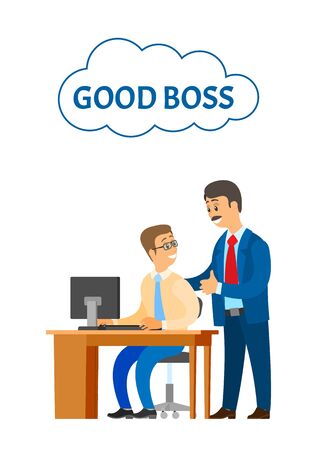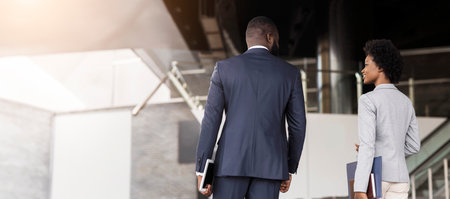Understanding American Workplace Culture
When it comes to job interviews in the United States, what you wear says a lot about your understanding of the workplace culture. The expectations for interview attire can vary widely depending on the industry, company size, and even the specific office environment. Dressing appropriately is not just about looking good—its about showing respect for the organization and demonstrating that you can fit in with their team.
Traditional Corporate Offices
In more formal industries like finance, law, or government, traditional business attire is usually expected. This means suits, dress shirts or blouses, ties, and polished shoes. The color palette tends to be conservative, such as navy, black, gray, or white.
Business Attire Cheat Sheet
| Item | Men | Women |
|---|---|---|
| Suits | Navy, black, or gray suit | Pant or skirt suit in neutral colors |
| Shirts/Blouses | Collared dress shirt (white or light blue) | Conservative blouse (no bold prints) |
| Shoes | Dress shoes (black or brown) | Closed-toe heels or flats |
| Accessories | Tie and belt | Minimal jewelry, simple bag |
Creative and Tech Environments
Startups, tech companies, and creative agencies often have a more relaxed approach to dress codes. Here, business casual or even smart casual is common. However, its still important to look neat and put together.
Examples of Business Casual Attire:
- Polo shirts or button-downs paired with chinos or khakis
- Knee-length dresses or skirts with a cardigan or blazer
- Clean sneakers or loafers (avoid flip-flops and overly casual shoes)
- Avoid graphic tees and ripped jeans unless youre sure its acceptable at that company
The Unwritten Rules of Interview Dress Codes in the U.S.
- When in doubt, its better to be slightly overdressed than underdressed for an interview.
- If possible, check the companys website or social media to get a sense of how employees dress.
- Aim for clean, wrinkle-free clothes and avoid overpowering fragrances.
- Your goal is to show you understand and respect the companys culture while also presenting your best self.
2. Dress Codes Decoded: What Employers Expect
Understanding the Most Common Interview Dress Codes
When preparing for an interview in the U.S., knowing what to wear can make a big difference in your first impression. Employers may expect different dress codes depending on their industry, company culture, and even the specific role you’re applying for. Let’s break down the most common dress codes you’ll encounter and how to figure out what’s right for your next interview.
Business Professional
This is the most formal standard for interviews, especially in fields like finance, law, or corporate roles. Think tailored suits, conservative colors, and polished shoes. For women, a pantsuit or skirt suit with closed-toe shoes is typical. For men, a matching suit, dress shirt, tie, and dress shoes are expected.
Business Casual
Many companies have moved towards business casual attire. This is less formal than business professional but still neat and put-together. Women might wear dress slacks or a skirt with a blouse or sweater, and men might choose chinos or dress pants with a button-down shirt. Blazers are optional but can elevate the look.
Smart Casual
This style is relaxed but still professional. It’s often seen in creative industries or tech companies. You can mix more comfortable pieces—like dark jeans or stylish flats—with smarter items like a blazer or collared shirt. The key is to look intentional without being too laid-back.
Common Dress Codes at a Glance
| Dress Code | Typical Attire | Industries/Settings |
|---|---|---|
| Business Professional | Suits, ties, dress shirts/blouses, formal shoes | Finance, Law, Corporate Offices |
| Business Casual | Dress pants/skirts, blouses/button-downs, loafers/flats | Marketing, Education, Healthcare Administration |
| Smart Casual | Dark jeans/chinos, blazers/cardigans, clean sneakers/flats | Tech Startups, Creative Agencies |
How to Decode Company Expectations
If you’re unsure about what to wear to an interview, there are simple ways to get clues:
- Check the Job Description: Sometimes employers mention the dress code directly (for example: “business attire required”). If not, see if they mention company culture keywords like “professional environment” or “creative workplace.”
- Visit the Company Website: Look at team photos or videos on their About Us page or social media profiles. Notice what employees are wearing—this gives you real-world examples of their everyday style.
- Ask Your Recruiter: If you’re working with HR or a recruiter, don’t hesitate to ask for advice on what’s appropriate to wear for the interview.
Aim One Step Up
A good rule of thumb is to dress one step more formally than the company’s everyday attire. This shows respect and that you’re taking the opportunity seriously—without looking out of place.

3. Essential Items for a Winning Interview Outfit
When preparing for a job interview in the U.S., your outfit can make a big first impression. Whether you’re interviewing for a corporate, creative, or tech role, choosing classic and well-fitted wardrobe staples is key. Here’s a guide to must-have items for both men and women, along with tips on color choices and fit.
Wardrobe Staples for Men
| Item | Options & Tips |
|---|---|
| Suit | Navy, charcoal gray, or black suits are safest bets. Make sure the suit fits well—shoulders align, sleeves end at the wrist bone, and trousers break just above the shoe. |
| Shirt | Crisp, long-sleeved white or light blue dress shirts work best. Avoid bold patterns; keep it simple and clean. |
| Tie | Choose solid colors or subtle patterns. Avoid anything too flashy. The tie should reach your belt buckle. |
| Shoes | Classic black or brown leather dress shoes (like Oxfords or Derbies) are appropriate. Make sure they are polished and clean. |
| Accessories | Keep it minimal: a simple watch, a leather belt matching your shoes, and no more than one ring per hand. |
Wardrobe Staples for Women
| Item | Options & Tips |
|---|---|
| Suit | Pantsuits or skirt suits in navy, black, or gray are classic choices. Fit is important—shoulders should sit properly and skirts should hit at or just above the knee. |
| Blouse/Top | Wear a tailored blouse or shell in white, cream, light blue, or another soft color. Avoid plunging necklines and loud prints. |
| Shoes | Closed-toe flats or low-heeled pumps in neutral tones work well. Make sure shoes are clean and comfortable for walking. |
| Bags & Accessories | A structured handbag or tote is practical. Keep jewelry understated—think stud earrings and simple necklaces. A conservative watch is also a good touch. |
Color Choices: What Works Best?
Neutral colors like navy, gray, black, and beige are always safe for interviews in the U.S. These colors convey professionalism and allow your qualifications—not your clothes—to stand out. For shirts and blouses, stick to lighter shades like white or pastels.
The Importance of Fit
No matter what you wear, the fit makes all the difference. Clothes that are too tight or too loose can look unprofessional and feel uncomfortable during an interview. Consider getting your main pieces tailored if needed so you look sharp and feel confident.
Quick Tips for Both Men & Women:
- Avoid distracting patterns and bright colors unless you know the company culture encourages bold fashion choices.
- Shoes should always be clean and in good condition—scuffed footwear can ruin an otherwise great outfit.
- If unsure about dress code specifics, it’s better to be slightly overdressed than underdressed for an interview in the U.S.
- Check your outfit in natural light before leaving home to ensure everything looks polished.
4. Grooming, Hygiene, and Finishing Touches
When it comes to making a strong first impression in a U.S. job interview, your grooming and overall appearance matter just as much as your clothes. Looking polished and well-groomed signals professionalism, respect for the opportunity, and attention to detail. Let’s break down the key elements you should consider before stepping into your interview.
Personal Grooming Essentials
| Area | What to Do | What to Avoid |
|---|---|---|
| Hair | Keep hair clean, neatly styled, and away from your face. For men, facial hair should be trimmed or shaved. | Messy, greasy, or overly trendy hairstyles that can distract from your qualifications. |
| Nails | Trim nails short and keep them clean; neutral polish is fine. | Long, chipped nails or flashy nail art. |
| Skin | Freshly showered with minimal, natural makeup (if any). | Heavy makeup or visible skin issues not addressed (e.g., oily skin). |
| Teeth/Breath | Brush teeth before your interview and consider breath mints (no chewing gum!). | Coffee breath, tobacco odor, or unbrushed teeth. |
Tattoos and Piercings: What’s Acceptable?
The U.S. workplace has become more accepting of tattoos and piercings, but it still depends on the industry and company culture. For most professional interviews (like finance, law, or corporate roles), it’s best to cover tattoos if possible and wear minimal facial jewelry. For creative fields or companies known for being progressive, small tattoos and simple piercings are usually fine—just keep them subtle for the first meeting.
Piercing & Tattoo Etiquette Table
| Item | Recommended Approach | Avoid |
|---|---|---|
| Tattoos | Cover with clothing or concealer if possible unless you know the company is tattoo-friendly. | Large, highly visible tattoos in conservative fields. |
| Earrings | Small studs or hoops for all genders are generally acceptable. | Multiple earrings or large statement pieces in formal industries. |
| Other Piercings (nose/lip/brow) | If removable, take out for the interview unless applying to a very creative field. | Multiple facial piercings in traditional business settings. |
The Right Way to Use Fragrance
Scent can make a lasting impression—positive or negative. In the U.S., less is more when it comes to fragrance in professional settings. If you choose to wear perfume or cologne, use just a little. Remember that some people have allergies or sensitivities to scents. A clean smell (think soap or fresh laundry) is always safe and appreciated.
Fragrance Dos and Don’ts Table
| Do | Don’t |
|---|---|
| Use a light touch; 1-2 spritzes max. | Saturate clothes or hair with strong scents. |
| Opt for subtle scents like fresh or powdery notes. | Wear overpowering perfumes/colognes (especially musky or spicy types). |
The Power of Subtle Accessories and Details
Your accessories should complement your look without drawing too much attention. Choose a classic watch, simple belt, modest jewelry, and a neat bag or briefcase. Well-polished shoes complete your outfit—they show you pay attention to even the smallest details!
5. Adapting to Virtual Interviews
Presenting Yourself Professionally on Camera
Virtual interviews are now a standard part of the hiring process in the U.S. Making a strong impression goes beyond what you say—it’s also about how you look on screen. Here are some practical tips to make sure you come across as polished and professional:
- Camera Position: Place your camera at eye level so you’re looking straight ahead, not down or up.
- Lighting: Use natural light or a lamp facing you to avoid shadows. Avoid having bright light behind you.
- Background: Choose a clean, uncluttered space. A plain wall, tidy bookshelf, or professional virtual background works well.
- Posture: Sit up straight with both feet on the floor to project confidence.
Choosing the Right Colors and Outfits for On-Screen Interviews
Your outfit should look great both in-person and onscreen. Some colors and patterns work better than others when viewed through a camera. Use the table below to help select your interview attire:
| Outfit Element | Recommended Choices | Avoid |
|---|---|---|
| Tops/Shirts | Solid colors like blue, white, or soft pastels | Bright red, neon colors, busy patterns |
| Suits/Blazers | Navy, gray, or black for a classic look | Shiny fabrics or bold prints |
| Accessories | Simple jewelry and minimal accessories | Large earrings or noisy bracelets |
| Pants/Skirts (if visible) | Neutral tones matching your top half | Loud patterns or shorts (even if not planning to stand up) |
Ensuring Your Outfit Looks Impeccable Onscreen
- Test Your Look: Do a video call with a friend or use your webcam to check how your outfit appears onscreen.
- Avoid Wrinkles: Make sure your clothes are freshly pressed—wrinkles show up clearly on camera.
- No Distracting Logos: Stick to professional attire without large logos or text.
- Consider Comfort: You’ll be seated for most of the interview, so choose something comfortable yet polished.
- Shoes Matter Too: Even if they won’t be seen, wearing shoes helps you feel “dressed for success.” It can boost your confidence and posture during the interview.
Your Virtual Interview Checklist
- Cameras and lighting tested before the interview starts.
- Dressed in solid, professional colors from top to bottom.
- Tidy background free of distractions.
- Sit up straight and maintain good eye contact with the camera lens.
- A glass of water nearby (out of frame) in case you need it.

